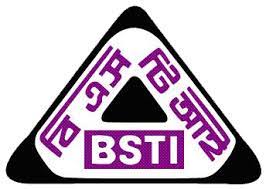Washington, D.C.—The costs of malnutrition—health, social, and economic—are staggering. However, the tools to improve nutrition are within our grasp. “Nourishing Millions: Stories of Change in Nutrition,” written by development leaders from the International Food Policy Research Institute (IFPRI) and other organizations, spotlights progress through stories, case studies, and real-world applications to show the public what works in nutrition while guiding policymakers to action.“Statistics are important in fighting global hunger and malnutrition, but it’s critical that we don’t forget the names, faces, and stories of those who feel it firsthand,” said Stuart Gillespie, IFPRI senior research fellow. “This book brings together the most intriguing stories about change in nutrition from the past five decades to alter perceptions and inspire action.”
Despite global progress in reducing hunger, other types of malnutrition such as wasting, stunting, micronutrient deficiencies and obesity are widespread and, in some cases, actually growing. As the lens of global attention focuses more squarely on these issues, it’s important to examine what is working, and share those successes through the eyes of those on the ground.
“Firsthand accounts of actual, tangible progress are critical to helping others grasp why action is so desperately needed,” said Rajul Pandya-Lorch, IFPRI chief of staff and co-editor of “Nourishing Millions.” “These great examples show that we have everything we need to end malnutrition and improve lives.”
Besides the human cost, undernutrition also costs the global economy up to $2.1 trillion, about the size of the entire economy in Africa south of the Sahara. As the share of the population that is overweight or obese continues to grow—it’s now more than double the number that get too few calories—nutrition will continue to be a top global focus and central to achieving sustainable development.
The stories in the book are diverse, spanning 50 years and playing out in different arenas, from community efforts to global initiatives. They involve many sectors and disciplines beyond just nutrition, including health, agriculture, education, social protection, and water and sanitation. The book is also geographically diverse, including case studies from Brazil, Bangladesh, Ethiopia, Peru, Vietnam.
Through an approach that included maternal education, increased sanitation services, and a tighter focus on maternal and child healthcare, coupled with rapid economic growth, Brazil reduced by more than two-thirds the under-five mortality rate, more than halved the proportion of people living on less than $1 a day, and reduced socioeconomic inequality in malnutrition. Bangladesh reduced the poverty rate and the number of children who were underweight or stunted thanks to nutrition-sensitive drivers in an environment of pro-poor economic growth. In Ethiopia, the Productive Safety Net Program reduced food insecurity from an average of 3.6 months to 2.2 months in just two years, among other improvements. Policymakers around the world can learn from these examples and, in some cases, identify ways to replicate models in their own countries.
“Nourishing Millions” is a key element of Compact2025, a global initiative to end hunger and undernutrition in the next decade.
“We need to accelerate progress to achieve a nutrition-driven global food system,” said IFPRI Director General Shenggen Fan. “Fortunately, the tools to do that are within our grasp and this book is such an example.”
Compact2025 will create a global knowledge and innovation hub to experiment, learn, and share evidence for pragmatic, action-oriented strategies. It will offer evidence-based context-specific strategies to support countries, institutions, and initiatives for the elimination of hunger and undernutrition by 2025.




